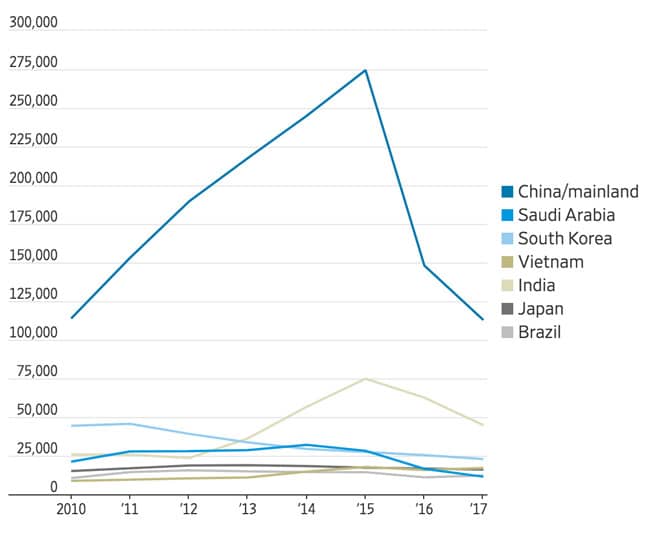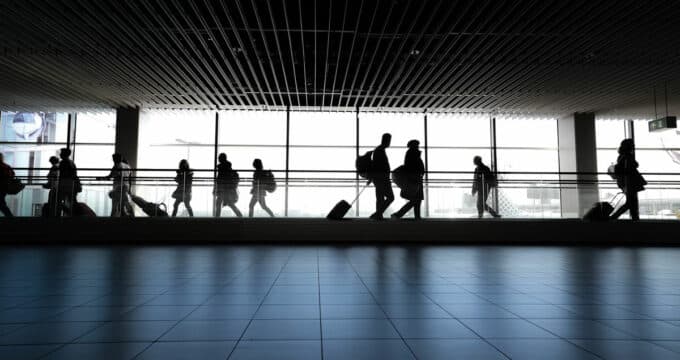US F-1 visas down nearly 17% in 2017
New data from the US State Department points to a marked decrease in the number of F-1 visas issued to international students in 2017. The F-1 visa class applies for students engaged in long-term studies in US higher education, as well as those on Optional Practical Training (OPT) placements following graduation.
The State Department now reports a total of 393,573 F-1 visas issued for the fiscal year ending 30 September 2017. This represents a 17% decline from the 471,000 F-1s issued in 2016, and a nearly 39% drop in F-1 visa issuance from the recent-year high in 2015.


- Data from US Immigration and Customs Enforcement (ICE) points to a 2% decline in international undergraduate enrolment between 2016 and 2017, and a 5% decline in the number of foreign students enrolled in US graduate programmes
- The Institute of International Education’s (IIE) Open Doors report highlights a record-high enrolment among survey institutions for 2016/17 but also notes a 3% decline in international commencements
- The latest admissions survey from the Council of Graduate Schools (CGS) also indicates that both international application volumes and commencements dipped between 2015/16 and 2016/17
Set alongside these other important indicators, the significance of such a substantial drop in F-1 visa issuance in 2017 may well be more evident in 2018 and 2019 if the declining commencements suggested by the reduced number of visas issued is less able to keep pace with the number of graduating students in the years ahead.
Contributing factors
The US government does not report on the number of visa applications received, nor does it reveal acceptance or rejection rates. Aside from the on-again-off-again US travel ban on visitors from Muslim-majority countries, however, there are some indications that US visa policy has generally become more restrictive, with more scrutiny of incoming international students, over the last two years. “Some of the [drop in F-1 visa numbers] can be attributed to stepped-up competition from schools in other countries,” notes the Wall Street Journal. “But immigration attorneys and school officials say Trump administration policies are making the US a tougher destination for foreigners and point to stricter scrutiny of those who do apply.” Indeed, US government officials have confirmed that the current US administration has explicitly revised its guidance for consular officials in order to encourage greater scrutiny of student visa applicants.
Declines not felt equally
The Journal further indicates that the steepest enrolment declines in 2017 are being felt at smaller regional institutions outside the top tier of US universities. This point is echoed by another recent report in the New York Times, which adds that, “Schools in the Midwest have been particularly hard hit — many of them non-flagship public universities that had come to rely heavily on tuition from foreign students.” The Times also highlights the connection between stable and growing international enrolments and the financial health of US colleges, a point that recently surfaced in updated analysis from Moody’s Investors Service. “‘Growing uncertainty for international student enrolment stems from immigration policies that are in flux,’ Moody’s said, warning that universities without global brand recognition would be hit hardest. While some flagship public and elite private colleges have been affected…the biggest impact will be felt by second-tier institutions.” For additional background, please see:














